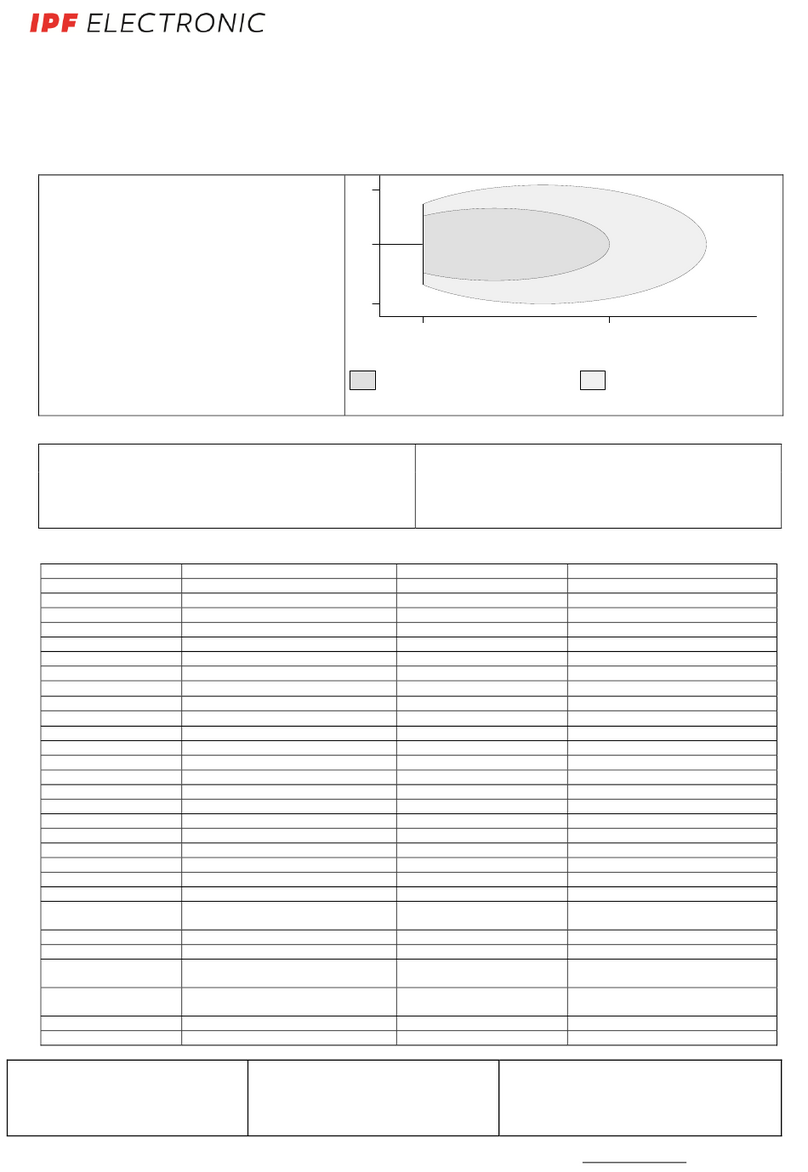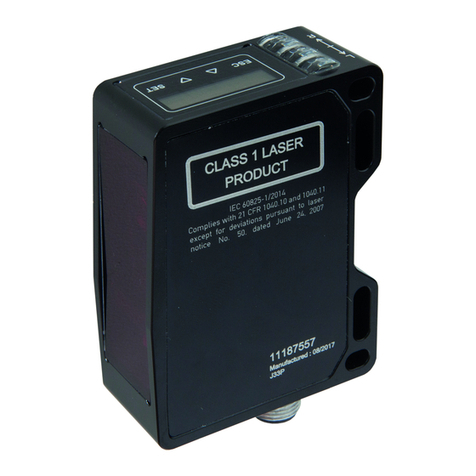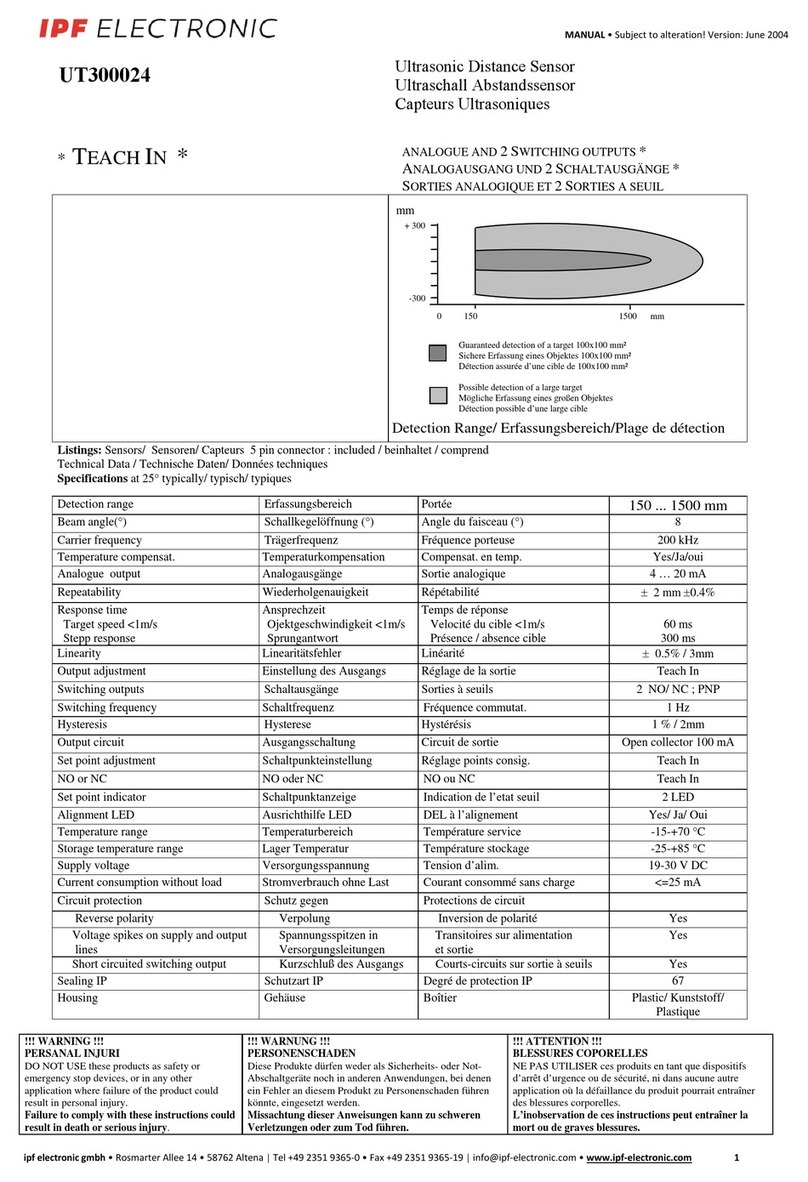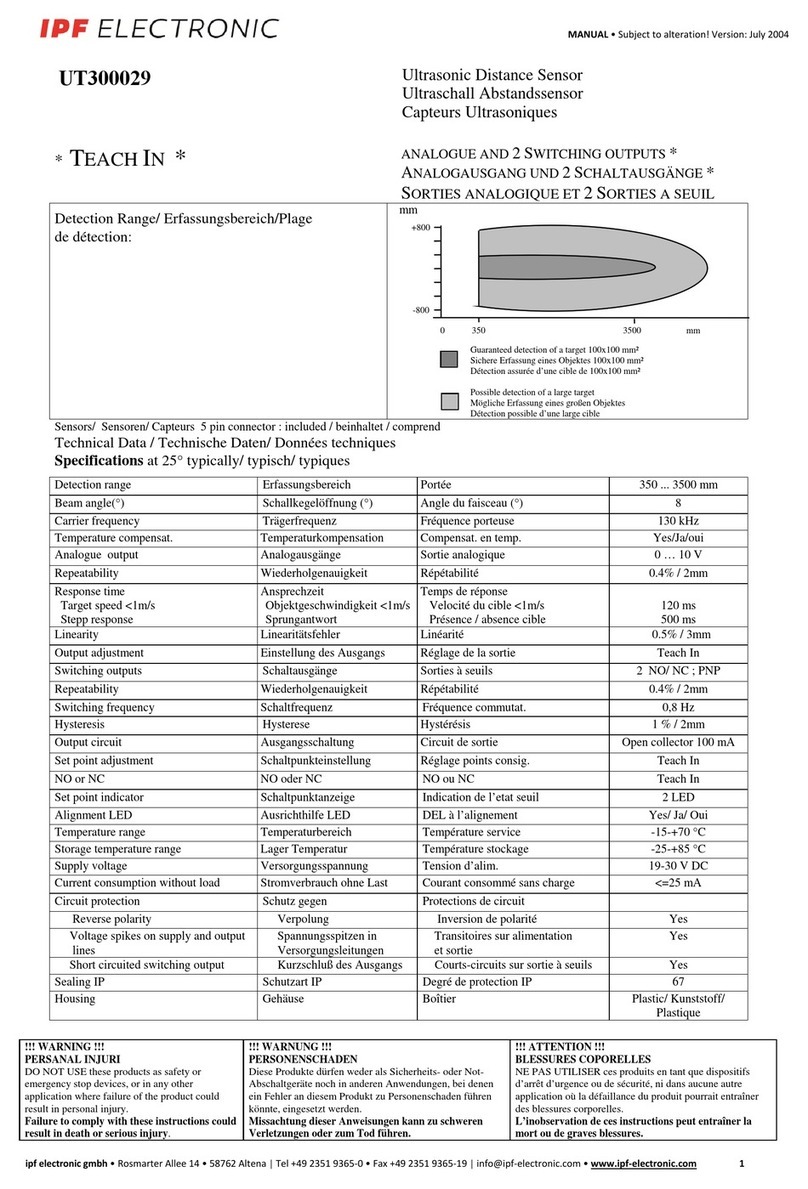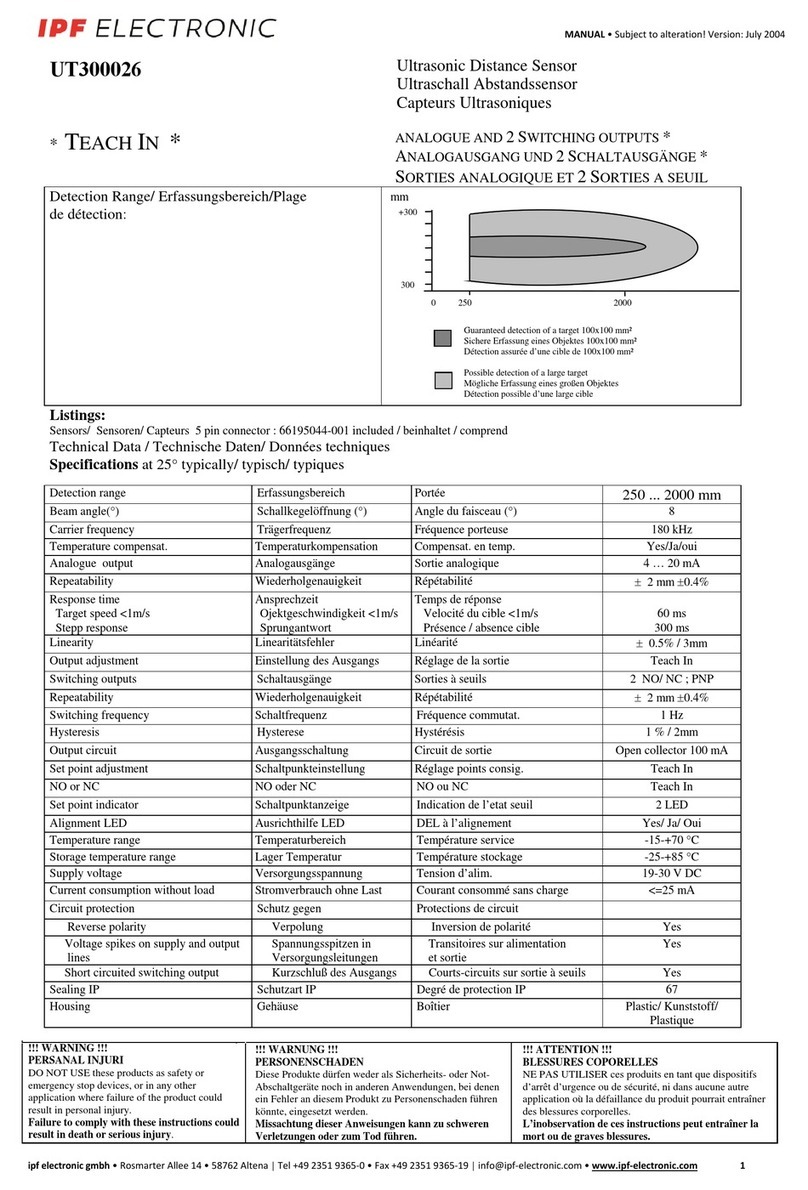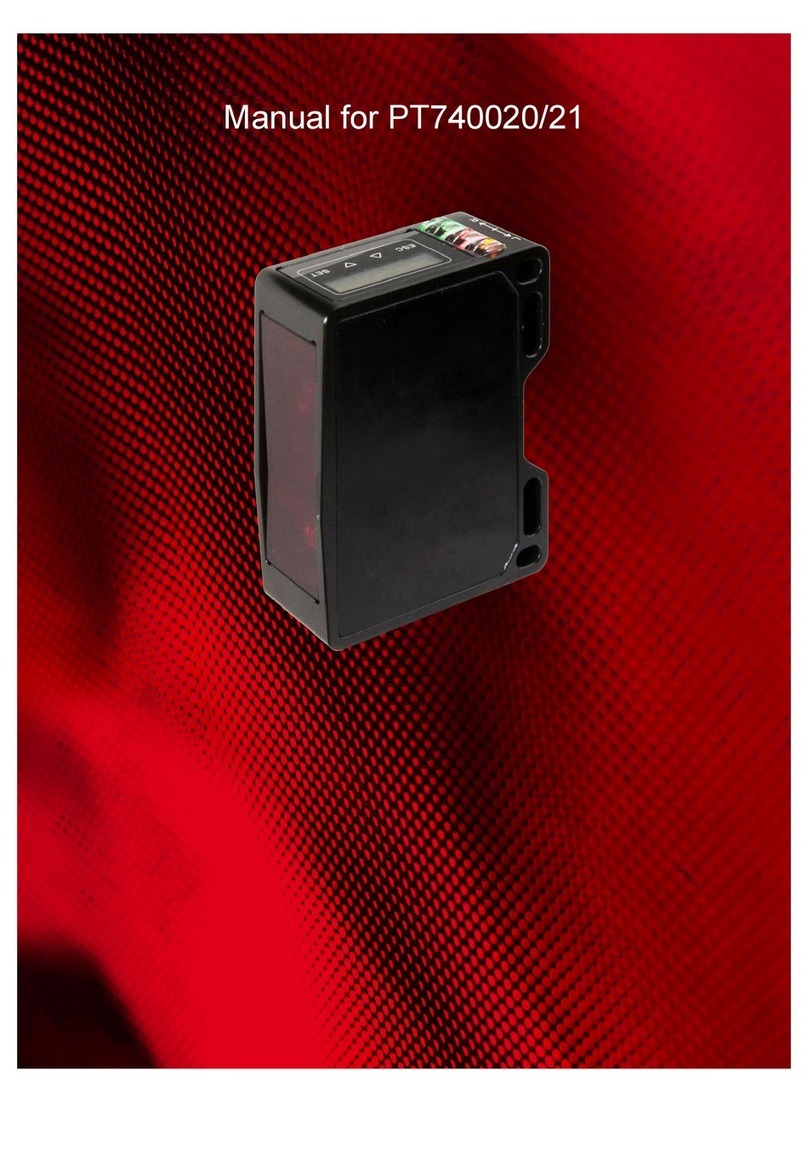
MANUAL • Subject to alteration! Version: June 2022
ipf electronic gmbh
│
Rosmarter Allee 14 • 58762 Altena • Germany
│
Tel +49 2351 9365-0 • info@ipf-electronic.com •
www.ipf-electronic.com
3
Cleaning
For cleaning a soft cloth moistened with soapy water is recommended.
Commissioning and adjustment
The measuring range is taught-in and the analog output is switched over by connecting the black wire (PIN 2) to the
operating voltage (PIN1).
The teach process is aborted after 20 seconds (Time Out function).
Make sure that the object to be detected is always within the scanning range limits (40 … 400mm).
In normal operation, connect the teach line to 0V to avoid interference.
1. Teach-in of a switching window
1. position the object at the switching limit 1.
2. Connect the white wire to the operating voltage for between 0.1 and 2 seconds. The LED flashes with approx.
1Hz.
3. position the object at the switching limit 2.
4. connect the white wire to the operating voltage for between 0.1 and 2 seconds.
5. the switching output is active at a distance between switching limit 1 and switching limit 2.
2. Teach-in of an object with background suppression (2-point teach)
1. position the object at the desired position.
2. connect the white wire to the operating voltage for between 2 and 4 seconds. The LED flashes with approx.
1Hz.
3. take the object out of the detection lobe so that the sensor is aligned with the background.
4. connect the white wire to the operating voltage for between 0.1 and 2 seconds.
5. the switching threshold is centered between object and background.
3. Automatic teach-in (Auto-Teach)
1. align the sensor with the background.
2. connect the white wire to the operating voltage for between 4 and 6 seconds. The LED flashes with approx.
2Hz.
3. in the next 4 to 8 seconds, guide as many objects as possible past the sensor at the desired distance.
4. the switching threshold is between object and background.
4. Change switching function (no / nc)
1. connect the white wire to the operating voltage for more than 6 seconds.
2. the switching output now works with the inverted function.
5. LED display after each teach process
If the status LED flashes twice, the teach process was successful and the sensor operates with the new values.
If the status LED flashes four times, the teach process has been aborted or the time window of 20 seconds has
been exceeded. The sensor operates with maximum switching distance as a normally open contact.
On the following page the descriptions are shown again graphically.
